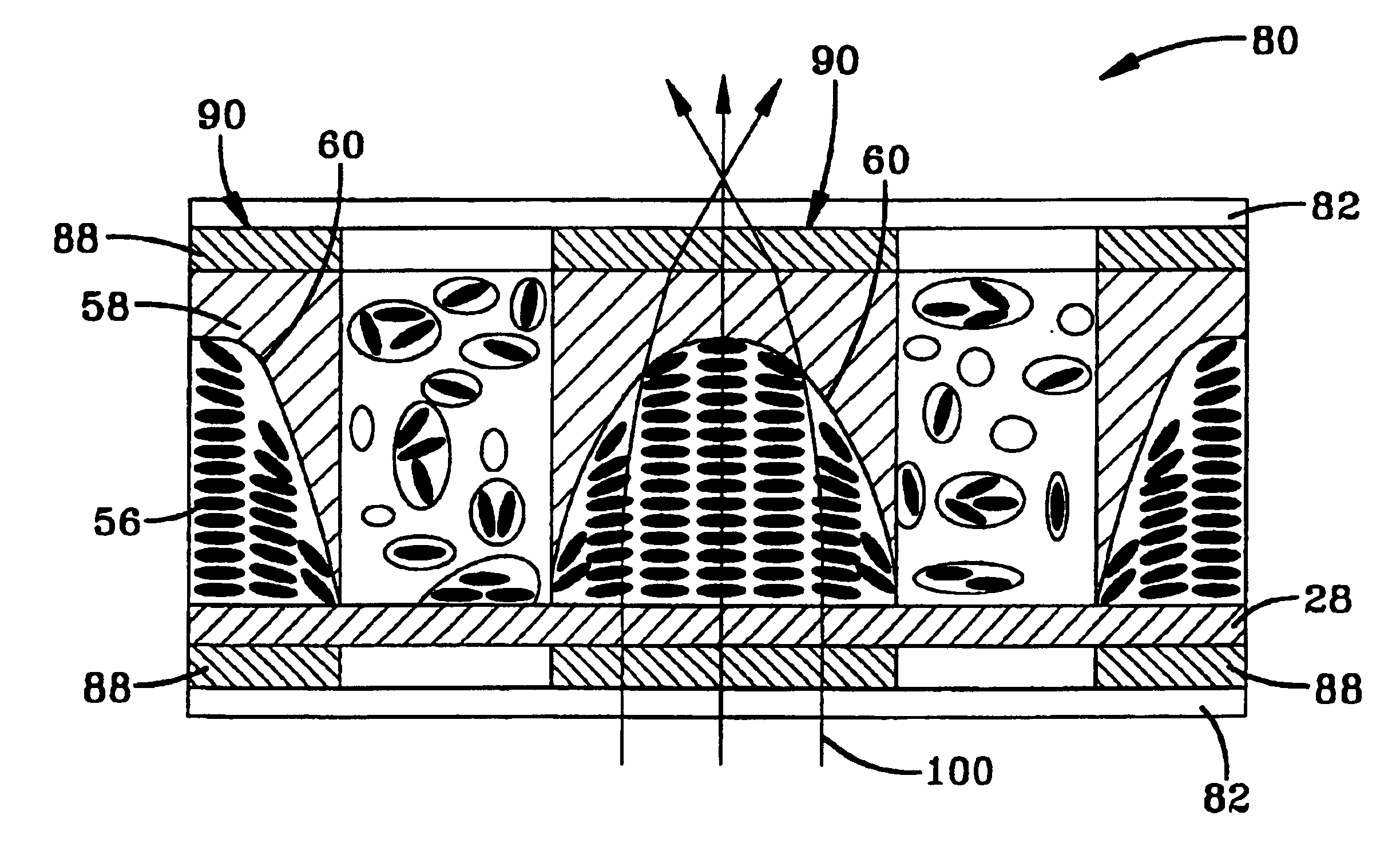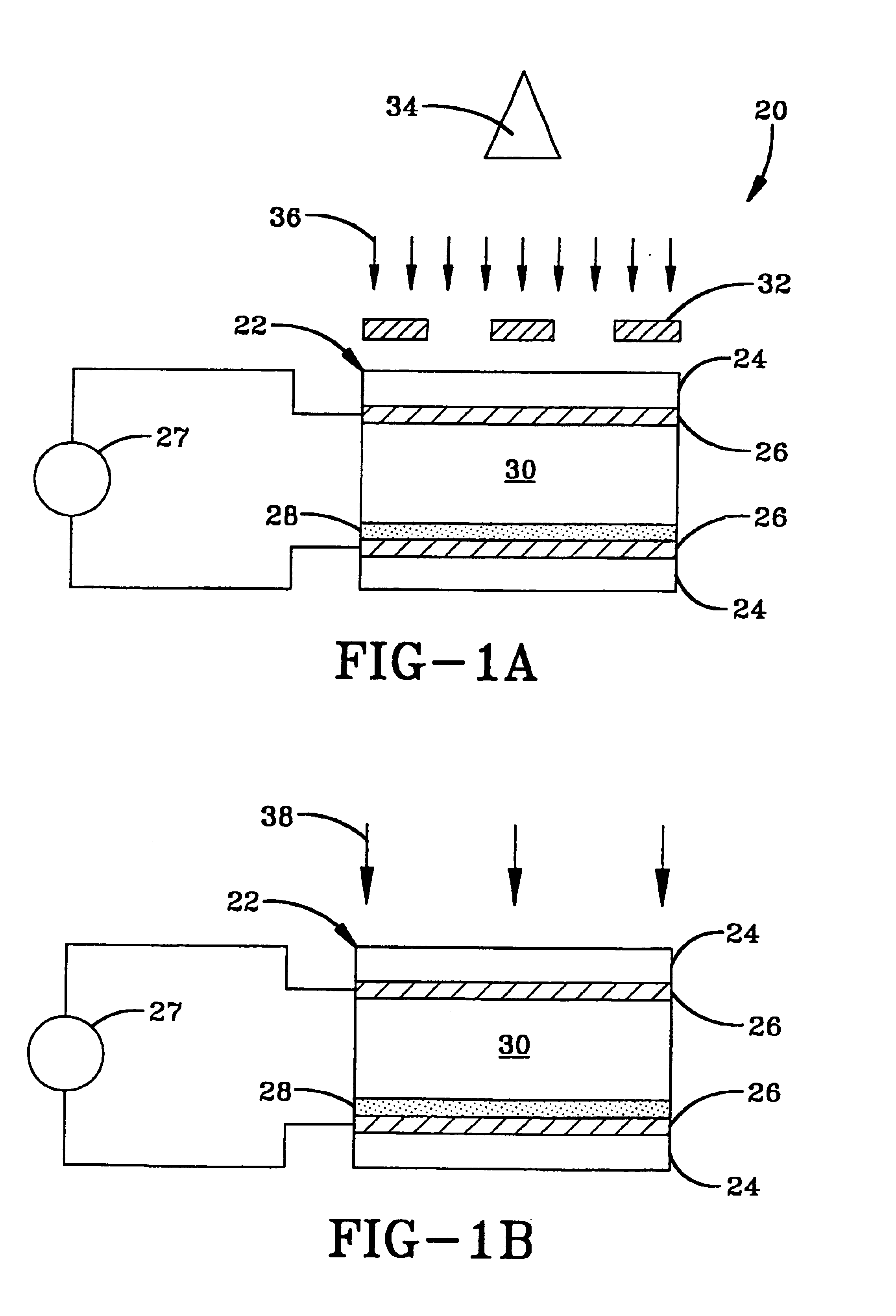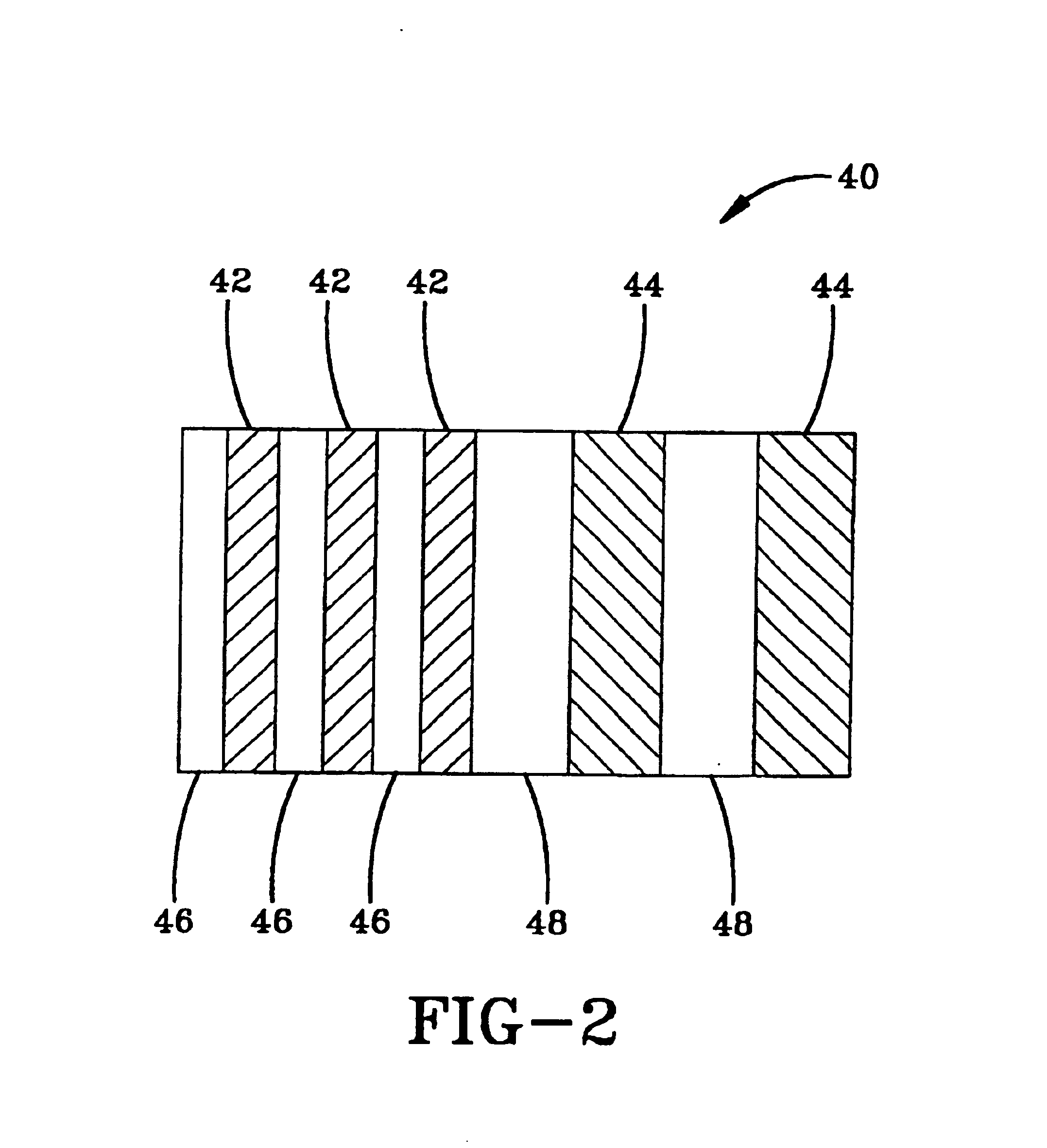Electrically controllable liquid crystal microstructures
a liquid crystal microstructure, electric control technology, applied in the direction of optics, instruments, diffraction gratings, etc., can solve the problems of cumbersome process of device construction, component failure to switch, and performance marred
- Summary
- Abstract
- Description
- Claims
- Application Information
AI Technical Summary
Benefits of technology
Problems solved by technology
Method used
Image
Examples
Embodiment Construction
The present invention provides a way of building new electro-optic devices consisting of phase separated composite organic structures (PSCOS) for use as light modulating, beam steering, and focusing elements. The position, shape, and size as well as the uniformity of liquid crystal material and polymer rich regions is easily controlled by the methods disclosed herein. One can use nematic, cholesteric, smectic (e.g., chiral Sm A, ferroelectric, ferroelectric, and antiferroelectric), or any other liquid crystal (LC) to construct devices with the present invention.
The devices of the present invention are fabricated by means of anisotropic polymerization induced phase separation (APIPS) of LC from its solution in a pre-polymer. The solution is placed between two substrates (glass or plastic) on which electrodes and alignment layer(s) were previously deposited depending upon the desired characteristics of the device. A photomask with desired pattern is placed between the UV source and th...
PUM
 Login to View More
Login to View More Abstract
Description
Claims
Application Information
 Login to View More
Login to View More - R&D
- Intellectual Property
- Life Sciences
- Materials
- Tech Scout
- Unparalleled Data Quality
- Higher Quality Content
- 60% Fewer Hallucinations
Browse by: Latest US Patents, China's latest patents, Technical Efficacy Thesaurus, Application Domain, Technology Topic, Popular Technical Reports.
© 2025 PatSnap. All rights reserved.Legal|Privacy policy|Modern Slavery Act Transparency Statement|Sitemap|About US| Contact US: help@patsnap.com



